Everest Base Camp Trek Weather in Spring Season (February, March, April, and May)
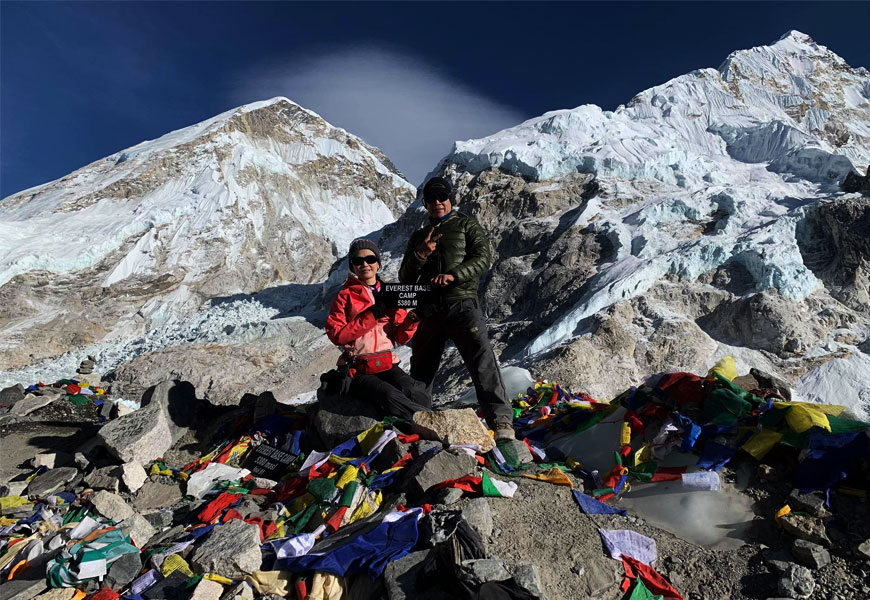
Spring is regarded as one of the best times of the year to trek to the Everest Base Camp (10-Day). This also includes the entire Himalayas of Nepal. It is the season when we have bid farewell to freezing winter and we are far away from monsoon and scorching summer. The Spring season is blessed with super-fabulous weather.
The trail will be blessed with greenery and the higher we hike the more we receive. Everywhere the Himalayan flowers can be seen, including the rhododendron one of the most enchanting flowers of the Everest region.
The temperature remains mild with a far visibility rate and long sunshine periods. The skies are crystal clear with magnificent views of the Himalayas.
Temperature normally gets 15°C during the day and goes to -10°C at night and wind speeds are limited to around 14km/hr. along with sunshine, 7 hours per day, and precipitation gets 15 mm per month, this decreases the possibility of rainfall.
Everest Base Camp Trek Weather in March
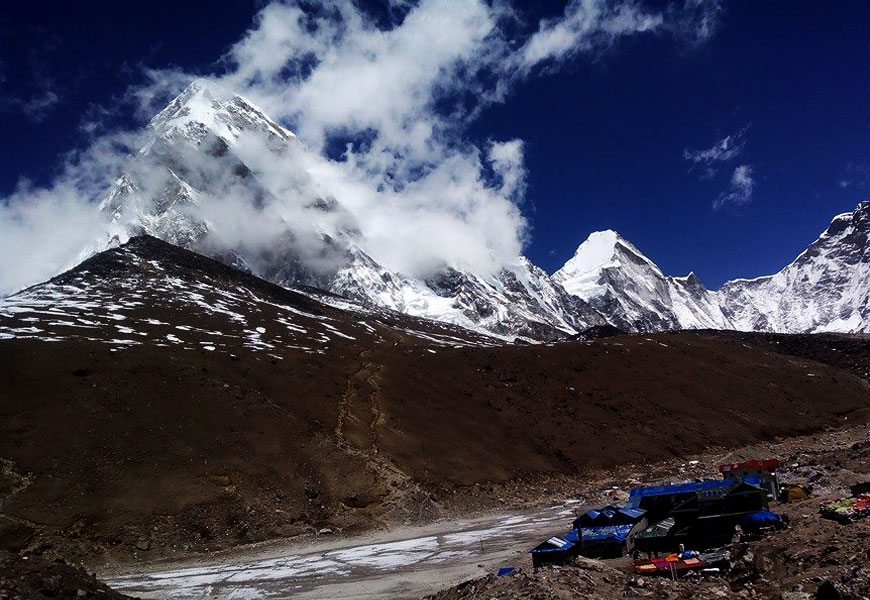
This time of the year is the beginning of the spring season after winter. The temperature remains moderate and all the lodges and tea houses start to reopen (which normally get closed during the winter season) at the high altitude.
At the very beginning of March, days remain short and the temperature starts to warm up, making this better than January and February. But still, there is the possibility of less snowfall.
This makes the temperature remains to be around 7°C during the daytime and -10° to -12°C during the night. this is a better and moderate temperature of the Himalayas.
Everest Base Camp Trek Weather in April
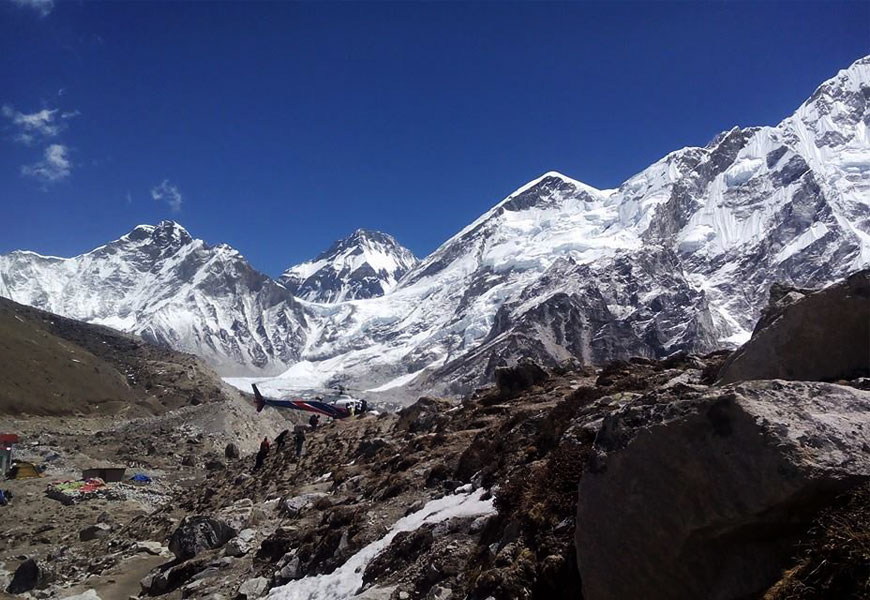
April remains one of the best months of the year to trek into the Everest Base Camp (12-Day). The temperature remains moderate around 10°C during the daytime to -5°C to -7°C during the night.
At the lower altitude, we can experience greenery everywhere with newly bloomed flowers and as we ascend higher, we will be able to explore the Himalayan flowers.
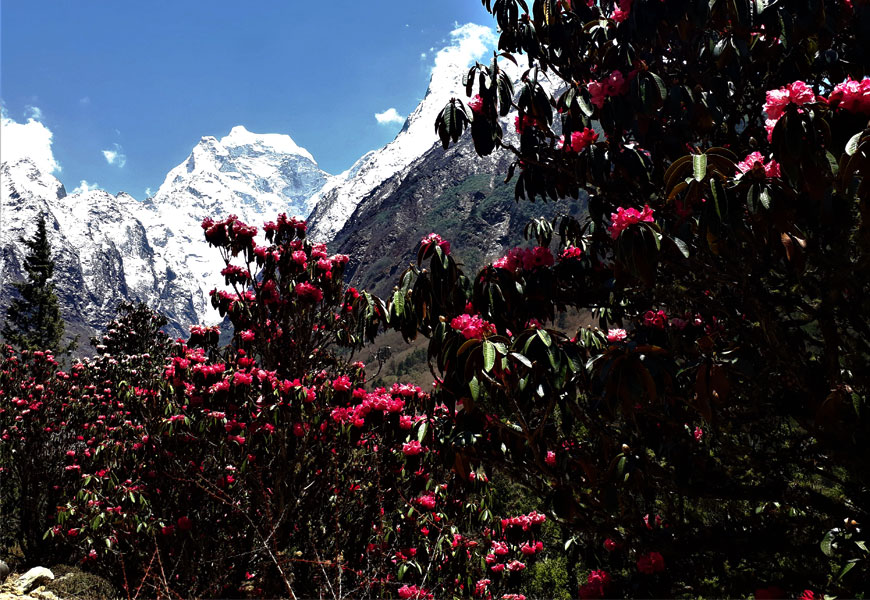
The trails remain busy with trekkers and all the lodges and tea houses are opened. The skies remain blue with a high visibility rate and the mountain is very enchanting, covered with snow.
Everest Base Camp Trek Weather in May
May is the last month of the Spring season and is regarded as the pre-monsoon period as well. Till the first 2-3 weeks of this month, the weather remains clear but as we are nearer to the month of June, the weather keeps on changing and might experience some rainfall at the lower altitude.
The temperature during the month of May ranges from 15°C during the day to 0°C during the night. Days are longer and warmer. As the temperature keeps increasing, climbers prefer summiting the peak during this month.
This helps snow to remain compressed and trail clear. So, there is the possibility to see climbers heading toward the base camp for their preparation.
It is better recommended to visit Everest Base Camp before May 20th if you don’t want to experience any disturbance due to the weather.
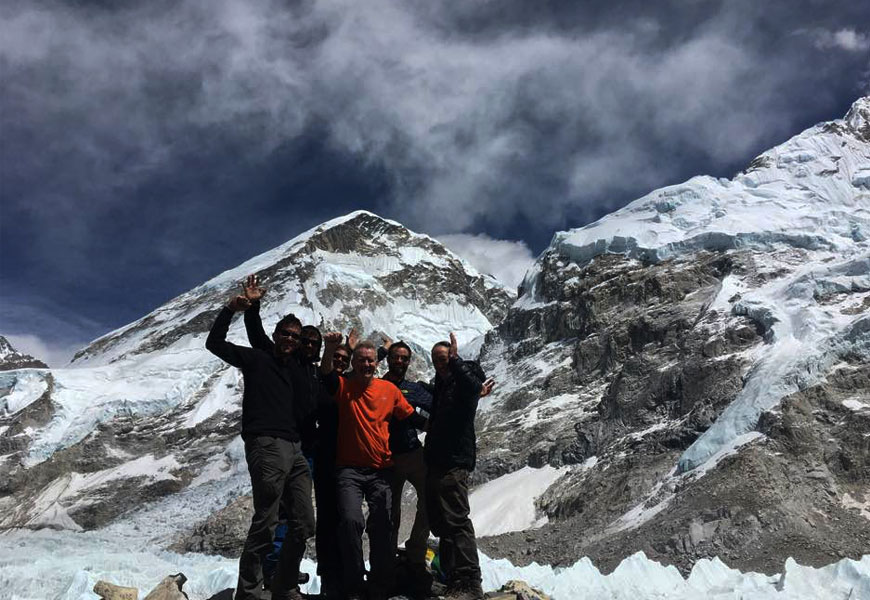
Everest Base Camp Trek Weather in Monsoon Season (June, July, and August)
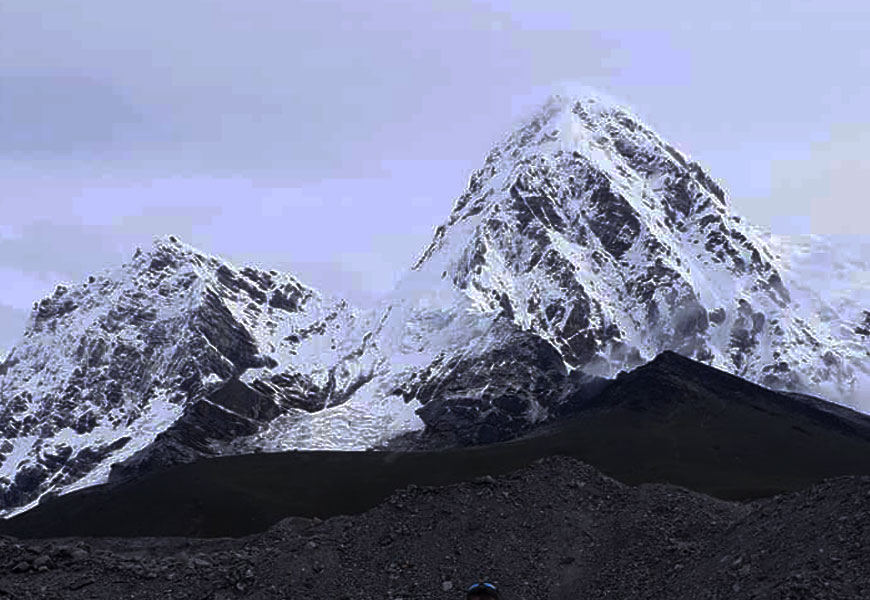
Monsoon is always a welcoming season in Nepal, it is the time when different crops are grown mainly rice, which is our staple crop. From the month of June to August, monsoon clouds are very active in Nepal and might last up to mid-September.
But for travelers, the monsoon remains an unfavorable season. During this time the temperature in the Everest Base Camp increased from 17°C during the day to 5°C during the night.
Days are warmer and sweaty. At the lower altitude, a downpour of rain makes the trail muddy, mossy, and slippery, and the leech is active as well. Sometimes lodges and tea house remains a good place for insects to hide from the downpour.
Due to the increase in temperature snow gets melted and the trail is less busy because most trekkers do not prefer to hike during this time of the year, but lodges, hotels, and airlines remain open with discounts.
Visibility is very poor due to active monsoon clouds, fog, and mist. The level of precipitation also increases up to 190 mm at the base camp and the wind speed hikes up to 16 km/hr. due to clouds, daily sunshine last for 5 hr. This makes the internet and cell phone connectivity poor and the solar panel less active.
Solar energy is the only power-generating system in the Himalayas. So, monsoon season affects this as well, which helps us in charging our gadgets and other electronic equipment.
Everest Base Camp Trek Weather in June
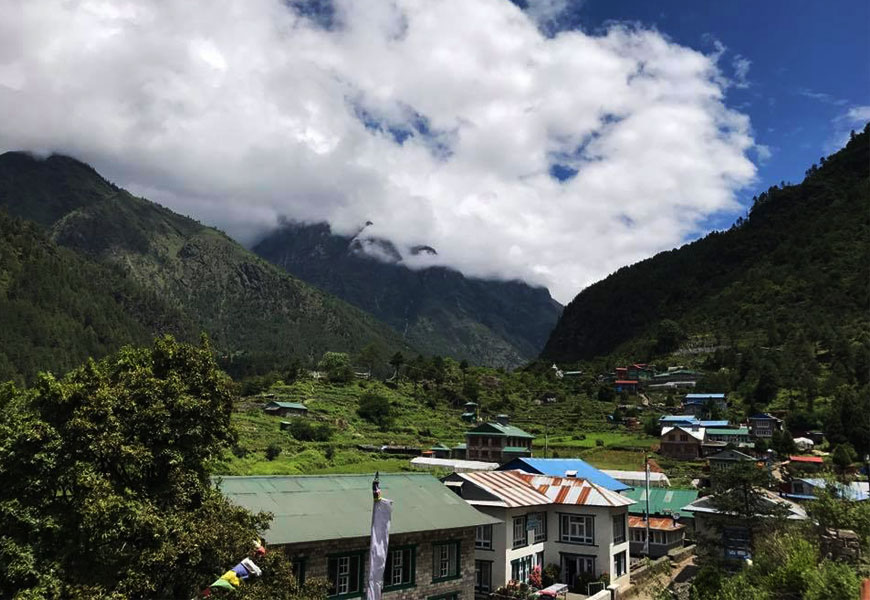
The month of June marks the beginning of the monsoon but the regular downpour will start from mid-June. This time of the year also resembles summer, in the Himalayas temperature rises to 17°C during the day and goes to -1°C at night.
This time makes a peaceful and quiet trek due to few trekkers. In terms of view, monsoon season is not very attractive, as the cloud is more active and covers the Himalayas but as we ascend higher the view gets better.
Everest Base Camp Trek Weather in July
July receives a sufficient amount of rainfall. The trails are muddy, slippery, and mossy and the temperature gets warmer.
During the day time, the temperature goes to 17°C and declines to 2°C during the night. Trails are peaceful and quiet as we encounter lesser trekkers. Lodges too remain quiet and you will have multiple options to choose your lodges.
Although it is hot and humid the views are exceptional and we recommended carrying a rain jacket during monsoon season.

Everest Base Camp Trek Weather in August
Although August also falls under the monsoon season we experience lesser rainfall than July. Skies at the lower altitude remain unclear but as we hike uphill to get a better view.
For the 2-3 first weeks of August, we will encounter rainfall at the lower altitude. During the day temperature goes to 16°C and at night declines to 2°C.
The weather starts getting better at the end of August month and trails started to get busy with trekkers.
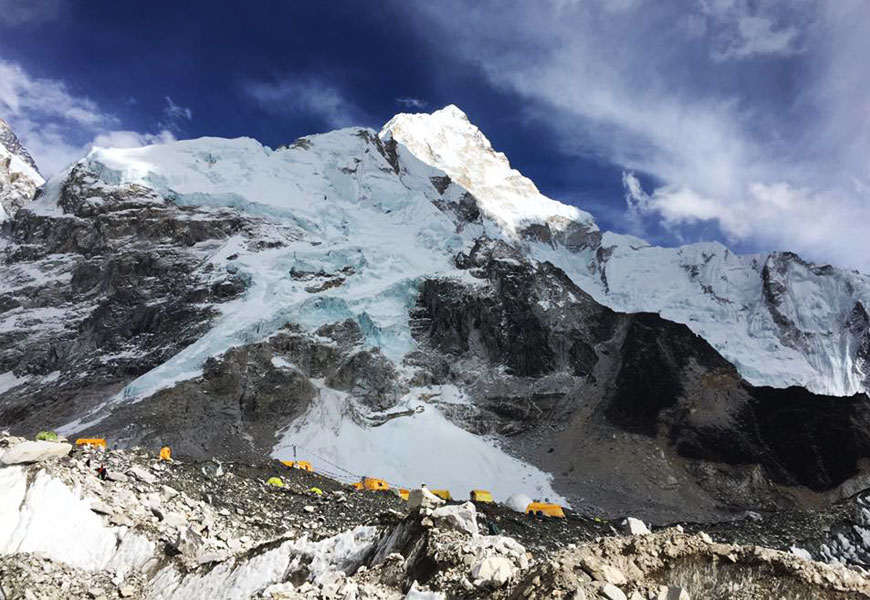
Everest Base Camp Trek Weather in Autumn Season (September, October, and November)
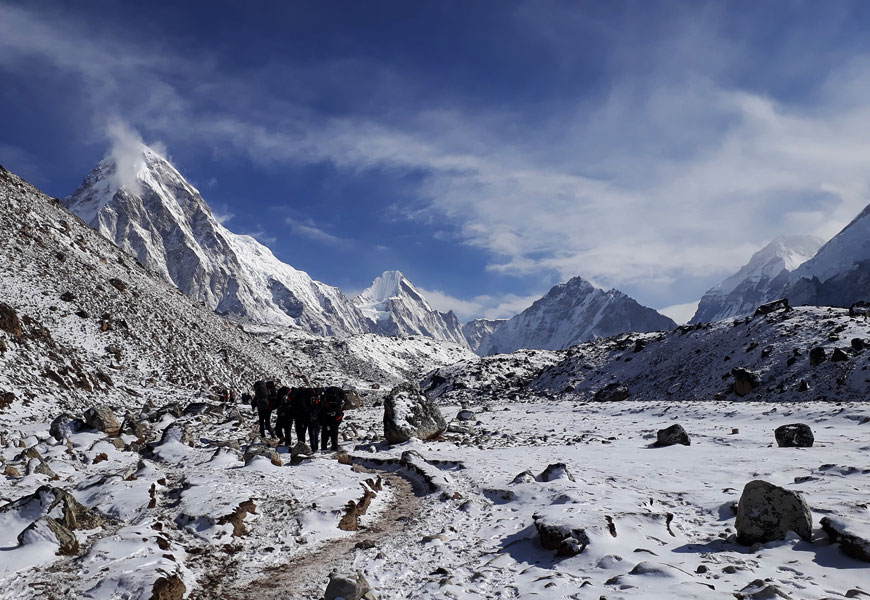
Autumn is another high trekking and climbing season in Nepal, where thousands of trekkers prefer to accomplish their dream of being in the Khumbu region and the other Himalayan regions of Nepal.
This is the driest season in Nepal, making the temperature in the Himalayas neither too cool nor too hot. The average temperature during the daytime is 15°C but sometimes it goes to 20°C during the daytime and -10° at night depending upon the altitude.
During the Autumn season temperature is moderate for trekking into Everest Base Camp (9-Day) with the magnificent view of the Himalayas. It is the time when the trail is busy with trekkers and the possibility of rainfall is very less or almost no.
The wind speed is also 14 km/hr. with a great visibility rate and sunshine, the hour is 7 per day. Due to the affordable temperature and long daylight, you can hike longer distances as well.
Everest Base Camp Trek Weather in September
September is the first month of the Autumn season and the first month after the long monsoon period. This helps the temperature to decrease at the Everest Base Camp trail.
Although this is the first month after the monsoon is still very rare, we might experience rainfall till the first 2 weeks of the month.
The day remains warmer at 15°C and the night at 2°C and the trail still will be less crowded with trekkers as compared to the other months of the Autumn. Skies remain clear with magnificent views of the Himalayas.
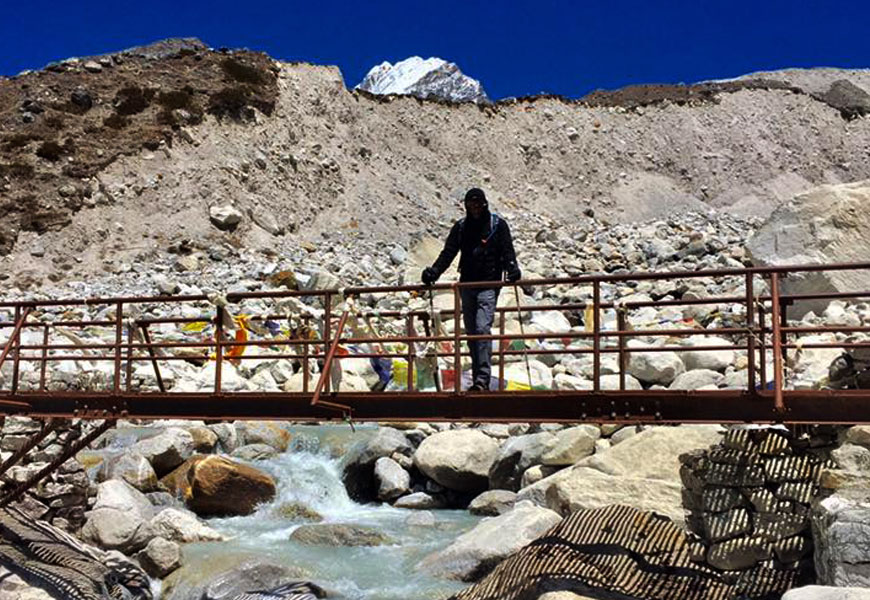
Everest Base Camp Trek (EBC) Weather in October
October is regarded as the best of the best month for the Everest Base Camp Trek in the Autumn season. This time provides a spectacular view of the Himalayas. Days remain sunny and bright with cloudless views of the mountains and a high visibility rate.
Days remain to be 12°C and night goes up to -6°C, making it a bit cool, and at the end of this month, the temperature decreases a bit more at the high altitude.
It is better recommended to be well prepared with all the necessary winter trekking gear along with a sleeping bag during the month of October.
And this time of the year is the busiest trekking season as well for all the Himalayan trails including Everest Base Camp Trek (16-Day). So, make sure you are looking for flights earlier including domestic and also required hotels to stay, and be prepared for some hike in the price of some services.
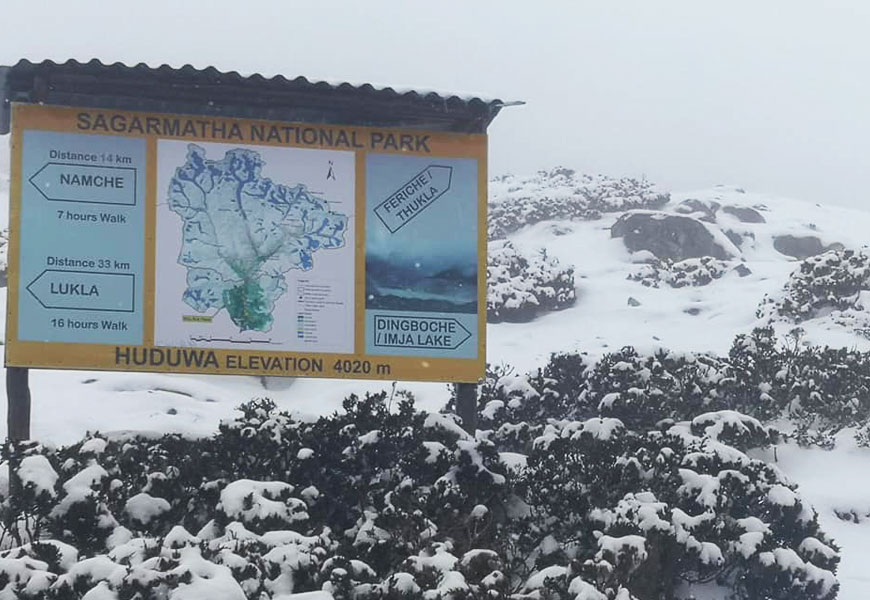
Everest Base Camp Trek Weather in the month of November
November is the last month of the Autumn season. The temperature keeps declining to 6°C during the daytime and -12°C at night but still, you can expect a super view at the high altitude.
This time of the year is almost the beginning of the winter, so make sure you are well-prepared with the required trekking gear.
As the month ends the temperature declines further and trekkers start to decline as well.
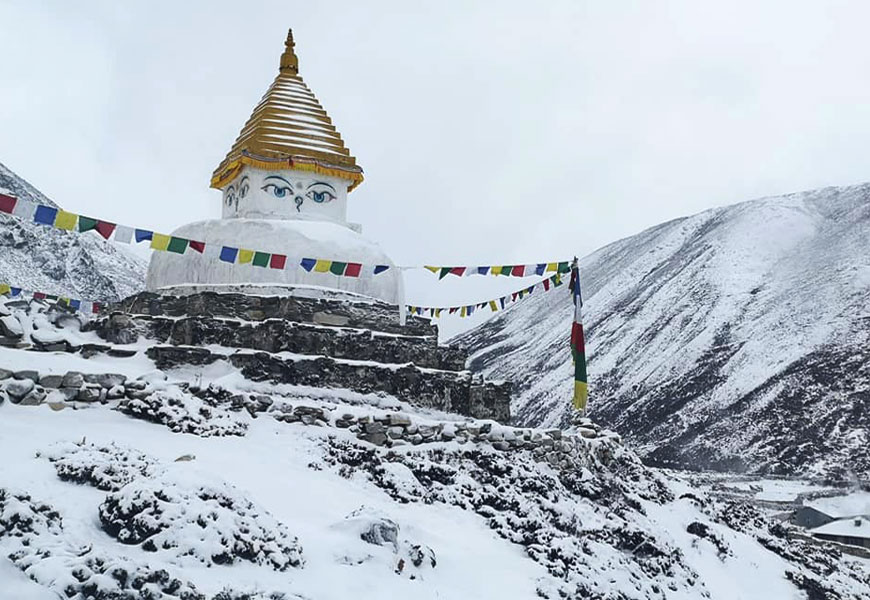
Everest Base Camp Trek Weather in Winter Season (December, January, and February)
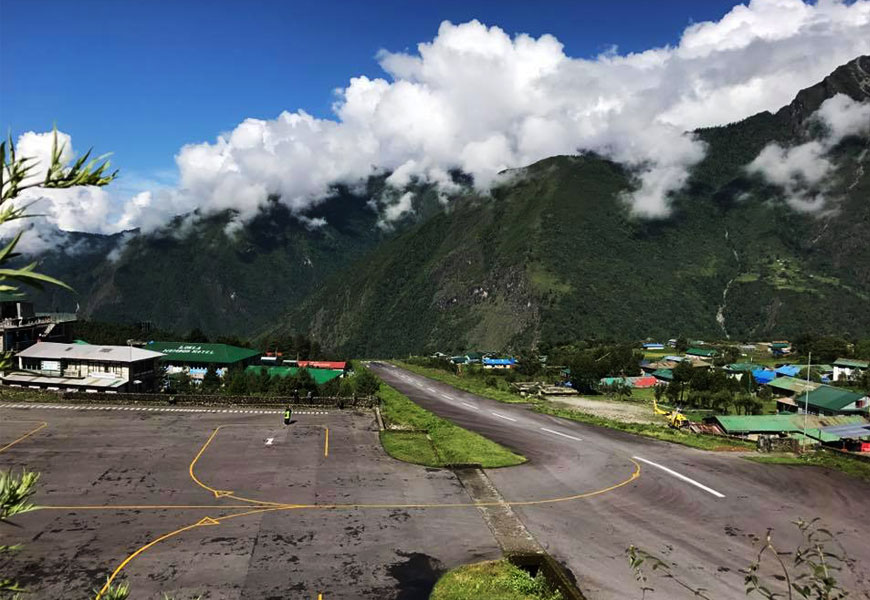
Trekking to Everest Base Camp during the winter season is not impossible but truly extra challenging. This time of the year is winter in Nepal and winter in the Himalayas is heavy snowfall (sometimes).
Regarding views, it is superb with truly snow-covered hills, villages, and the Himalayas and one has to be well prepared for heavy snowfall as well.
The average temperature during the daytime will be around 15°to 20°C and the night temperature will go to -17°C, along with a wind speed of 40km/hr.
Although sunshine will be 7 hours per day we need to be well prepared for the extreme cool. So, it is recommended to carry winter trekking gear.
Apart from this if you seriously want to accomplish the Everest Base Camp trek during the winter season, better keep some extra reserve days. This is so because sometimes you might be stuck in bad weather and need to wait for an extra day to get the weather clear.
During this season of the year, trekking solo without a guide or porter is not a good idea, because the trail to the high Himalayas is mainly covered with snow, and lodges remain closed except for some. This might mislead you to other areas and might be in problem calculating your overnight camp.
Everest Base Camp Trek Weather in December
December is the first month of winter and brings the temperature below freezing point at the Everest Base Camp. The temperature will be 4°C during the daytime and -14°C at night.
During this time of the year, snowfall frequently happens, and trails sometimes get worse mainly at high altitudes.
Apart from this, days are cloudy and foggy and skies remain disturbing for good views than in other months of the year.
Due to extreme freezing temperatures, you need to carry heavy winter trekking gear along with a good sleeping bag that can support around -20°C.Everest Base Camp Trek Weather in January
January remains extreme winter in the Himalayas but views of the mountain and landscape are breathtaking with snow everywhere.
Temperature is below freezing point and can range to 4°C during daytime and -17°C during the night.
Snowfall often happens and trails will be covered with snow. Sometimes you might need to have a reserved day to get the weather is normal for hiking.
Due to extreme winter, fewer trekkers will be encountered on the trail and maximum lodges at the high altitude remain closed. Villagers descend towards lower altitudes to skip extreme weather. Be prepared with sufficient warm trekking gear.
 Everest Base Camp Trek Weather in February
Everest Base Camp Trek Weather in February
February is the last month of the winter season and the beginning of the spring as well. For the first half of February temperature remains chilly and is not regarded as peak trekking season.
Normally temperature ranges from 6°C to -15°C and at night temperature drop below the freezing point.
At the base camp of Everest, the temperature is warm with a magnificent view and you can walk on the trail comfortably as the snow starts to melt.
You will be able to see trekkers on the trail and lodges starts to re-open to welcome trekkers at the end of February. At the end of February, days are sunny, bright, and clear with a high visibility rate leading you to jaw-dropping views of the Himalayas and the surrounding landscape.
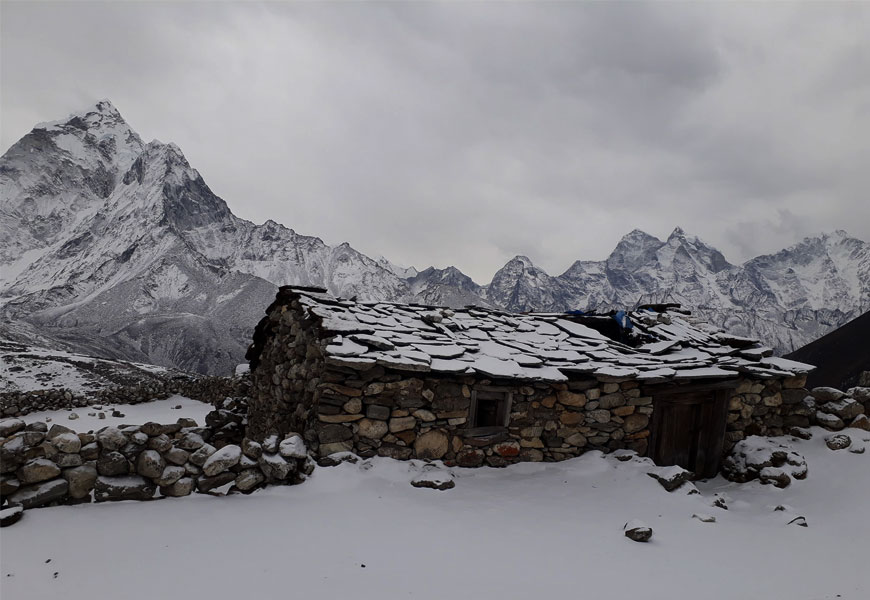
The Crux of the Blog
This blog is truly meant to inform trekkers about the weather condition of the Everest Base Camp trail. Trekking to Everest Base Camp is possible throughout the year.
Even during the monsoon season at the lower altitude, there will be rainfall but as we ascend higher from Namche Bazaar the possibility of precipitation is very low. As the Himalayas blocks the monsoon cloud.
Although during the winter season, the Himalayas receives extreme snowfall till the Everest Base Camp, we will be able to hike and this is done by many.
If you prefer to explore the Himalayas of Nepal in their fullest form. I strongly recommend you trek Everest Base Camp during Spring and Autumn seasons. These two seasons include the month of March, April, May, September, October, and November. Moreover, there are different packages for Everest Trek for selection depending upon your time frame and interest.
Spring and Autumn seasons are high trekking and expedition season as well. But to be precise, the Himalayas weather is extremely unpredictable. We have numerous incidents of rainfall and snowfall during the uncommon seasons as well.
It never means you need to get worried, the only thing for the Everest Base Camp trek is to be physically and mentally fit and be prepared for any situation which might occur due to weather conditions.
One very positive point here to note is that all the climate change which occurs in Nepal is from the Indian Ocean, due to the cyclone, tsunamis, etc. and the cloud so formed takes a couple of days to reach the Himalayas of Nepal.
This in-between time helps trekkers to ascend and descend faster to their prescribed destination. Trekkers have sufficient time to cope with unpredictable weather conditions.
So, keep updated about the weather as well when you are solo in the Himalayas.
For more information WhatsApp: +977-9841161593 or Email: [email protected]
















